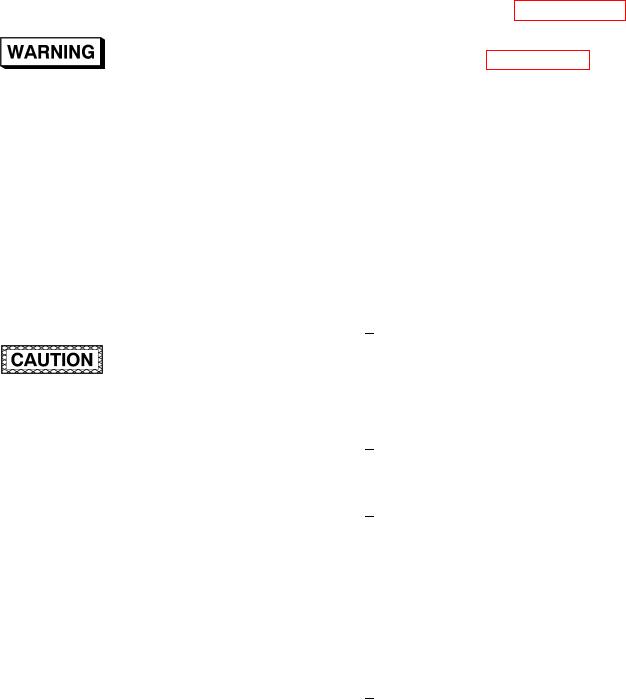
TM 1-1500-204-23-11
(e) Tape the release ilm onto a lat surface.
system speciic technical manual for
the amount and type of resin to use. If
no resin amount is speciied, use the
(f)
Measure and record the total square
amount speciied in paragraph 6-17.
footage of the dry fabric.
Use resin manufacturer s recommen-
dations for mixing. Prepare the vacuum
bag according to paragraph 6-18 prior
to mixing resin.
Resins, accelerators, and potting compounds
are toxic to the skin, eyes, and respiratory
(h) Use a clean wax-free cup to mix resin.
tract. Prevent eye and skin contact by wearing
Cut the end of a tongue depressor
goggles and gloves. Perform all mixing in a
square to mix the resin so the stick can
well ventilated area. If resin contacts the skin,
reach the corners of the cup. If multiple
wash immediately with soap and water. Do
sheets are to be impregnated, the resin
not use solvents to remove resin from skin.
will need to be mixed in a separate
cup for each sheet to ensure the cor-
Do not exceed the maximum amount of mixed
rect amount of resin is applied to each
resin per the manufacturer s instructions or a
sheet.
hazardous exothermic reaction will result. If
multiple sheets are to be impregnated, the
(i)
Impregnate the fabric following these
resin will need to be mixed in a separate cup
steps:
for each sheet to ensure the correct amount
of resin is applied to each sheet.
Using an adhesive spreader such
1
as a brush or spatula apply a thin
layer of resin, approximately the
same size as the dry fabric, onto
the release ilm taped to the lat sur-
Apply pressure to adhesive within the pot life
face.
of the resin. For ambient temperatures in
excess of 90 F, decrease this time by 50%.
2
Place pre-cut dry fabric on the
An unsatisfactory repair will result if the resin
resin. Maintain iber alignment; i.e.
gels before adequate pressure is applied and
minimize wrinkling and waviness.
may result in loss of structural integrity. Select
and prepare a heat blanket (if required) and
Apply resin to the dry side of the
3
all necessary vacuum bag materials prior to
woven fabric and work resin into
mixing resin.
fabric using the adhesive spreader.
Pour the resin onto the center of
Reduced strength will result if the incorrect
the fabric; pour it into a single
mix ratio is used, if an excessive amount of
pool of resin (multiple pools, donut
air is introduced into the resin during mixing,
shapes, and random patterns can
or if mixing is inadequate and may result in
entrap air). Scrape the cup to
loss of structural integrity.
ensure the calculated amount of
resin is placed on the fabric.
NOTE
Fold the release ilm cut over the
4
Mixing resin and fabric impregnation must be
woven fabric. Using a clean roller,
done in a controlled environment.
spatula or straight edge, work resin
Adhesive of combined parts A and B will be
into the fabric and remove any air
uniform in color when properly mixed.
bubbles. Keep all the resin in the
fabric and use care to minimize dis-
Part A of adhesive may require stirring after
tortion of the woven material dur-
prolonged storage as chemical agents of part
ing resin impregnation. Carefully
A may separate.
impregnate the fabric as evenly as
To ensure accurate mix ratio, a minimum of
possible; work outwards from the
25 grams of adhesive should be mixed.
center of the resin pool adjusting as
necessary.
(g) Determine the amount of laminating
(j)
Place the template on the release ilm.
resin that will be needed. Refer to the
6-40

